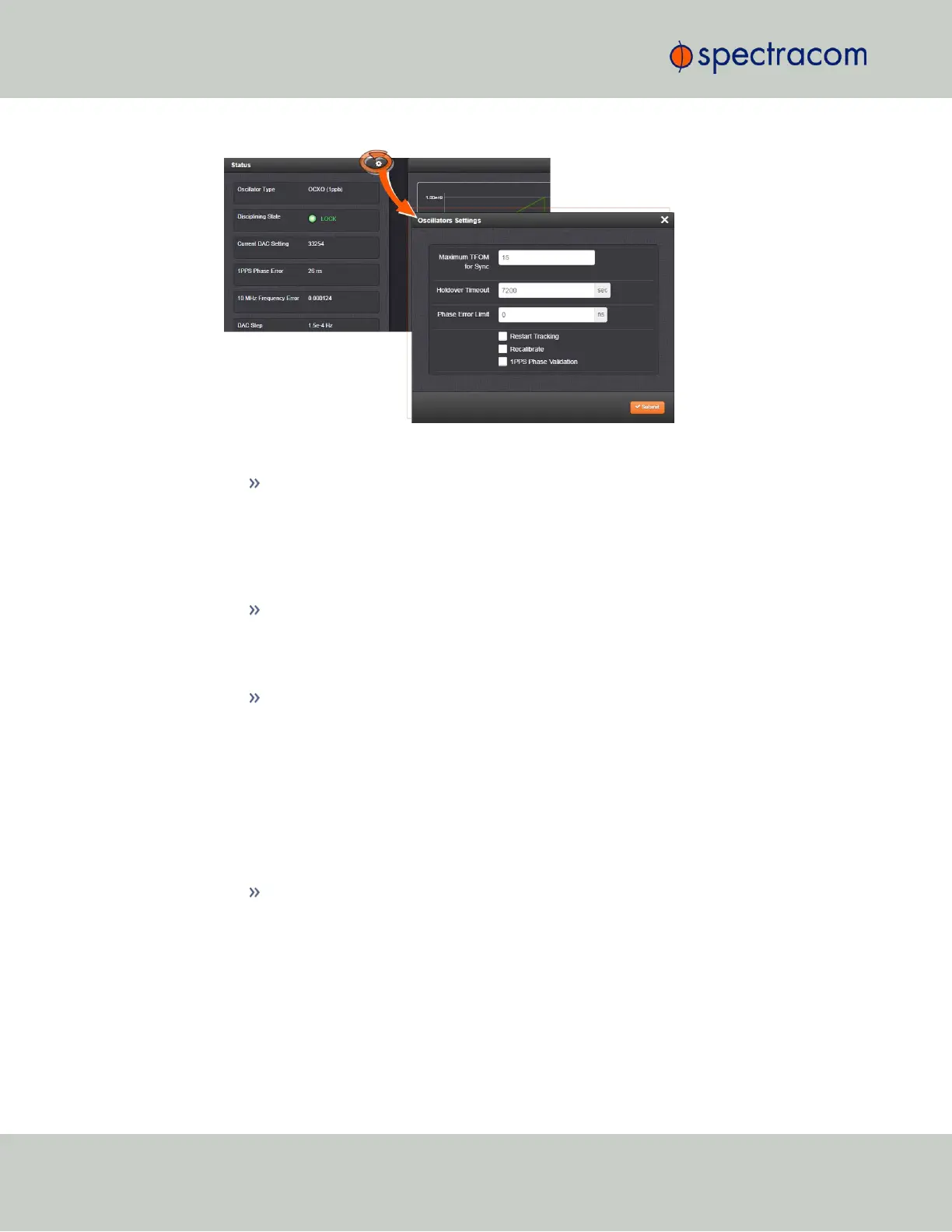3.
Populate the fields:
Maximum TFOM for Sync: When TFOM (Time Figure of Merit, see also "Time Fig-
ure of Merit (TFOM)" on the facing page) is greater than Max TFOM, disciplining
will still be attempted against the selected reference to improve the TFOM. If the
condition persists, the system will transition to holdover, and eventually out of
sync. When disciplining is performed such that TFOM is no longer greater than
max TFOM, the system will transition back into sync.
Holdover Timeout(s): The default is 7200 s (= 2 hours).
For more information on holdover timeouts, see "Typical Holdover lengths in
seconds" on page212. For additional information on holdover, see "What is
"Holdover Timeout"?" on page210.
Phase Error Limit: [Default=0 (disables this feature)]. Setting a Limit (valid for +/-)
for the Phase Error between an external 1PPS reference and the System 1PPS will
cause the disciplining tracking to restart automatically (after a few minutes delay)
if that limit is exceeded. This will help to quickly re-align the System 1PPS with a
reference.
When using a Host Reference as a primary or backup reference, for improved
performance it is recommended to set the phase error limit for NTP to a suggested
value of 100000 ns (= 1 second). Adjust this value as needed, based on your
accuracy requirements.
Restart Tracking: Check this box, and click Submit if you want to manually restart
disciplining tracking.
This option causes the disciplining algorithm to stop tracking the input reference
and start over (as if it was just acquired). This can be useful if there is a large
phase offset between reference 1PPS and system 1PPS, as it may occur when
going back into sync to the external reference after a long holdover. A Restart
Tracking will re-align the system 1PPS with the reference 1PPS very quickly, but
may cause the 1PPS output to jump.
216
CHAPTER 3 • SecureSync User Reference Guide Rev. 26
3.5 Managing the Oscillator

